Online Gather.town Pitches
RF Coils, Technologies & Sequences IV
Joint Annual Meeting ISMRM-ESMRMB & ISMRT 31st Annual Meeting • 07-12 May 2022 • London, UK

| Booth # | ||||
|---|---|---|---|---|
4497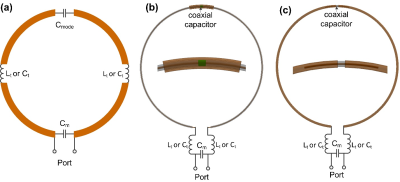 |
1 | Coaxial Self-decoupled RF Coil
Shuyang Chai1, Yue Zhu2,3, Ming Lu2,3, John C Gore1,2,3, and Xinqiang Yan2,3
1Department of Biomedical Engineering, Vanderbilt University, Nashville, TN, United States, 2Vanderbilt University Institute of Imaging Science, Vanderbilt University Medical Center, Nashville, TN, United States, 3Department of Radiology and Radiological Sciences, Vanderbilt University Medical Center, Nashville, TN, United States Wearable RF coils are receiving increasing attention since they can improve patient comfort and maximize SNR. For wearable coil arrays, however, the geometrical relationships between coils may change when they are bent and/or stretched. This in turn may decrease the performance of conventional decoupling methods such as overlapping and L/C network, especially for transmit/receive coil where the preamp decoupling is not feasible. In this work, we proposed a novel coaxial self-decoupled coil that has robustness decoupling performance versus coil distance and coil shapes. High isolations of <-15 dB can be achieved when the coils are gapped, overlapped, and/or stretched. |
||
4498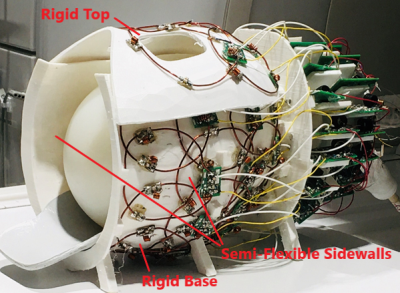 |
2 | A 32-Ch Over-Overlapped Semi-Flexible RF Head Coil Array with Improved Deep Brain SNR
Yunsuo Duan1,2, Feng Liu1,2, Rachel Marsh1,2, Matthew Riddle1,2, Gaurav H. Patel1,2, John Gray1,2, Alayar Kangarlu1,2, Lawrence S. Kegeles1,2, and John T. Vaughan Jr.3
1MRI Research Center, Department of Psychiatry, Columbia University, New York, NY, United States, 2New York State Psychiatric Institute, New York, NY, United States, 3Zuckerman Institute, Columbia University, New York, NY, United States
To improve the SNR in deep brain of human head images acquired using RF coil arrays with high coil element count, we proposed a 32-ch coil array with enlarged and over-overlapped coil loop elements laid out on a semi-flexible 3D-printed coil former. The experiment results showed that both the overall homogeneity of images and the SNR in deep brain are significantly improved.
|
||
4499 |
3 | Experimental and Numerical Simulation of the Miniature Flexible Coil for High-SNR Pituitary MRI
Siyuan Liu1, Jiahao Lin1,2, Marvin Bergsneider3, Rock Hadley4, Giyarpuram N Prashant3, Sophie Peeters3, Kyunghyun Sung2, and Robert N Candler1,5
1Electrical and Computer Engineering, University of California Los Angeles, Los Angeles, CA, United States, 2Department of Radiological Sciences, University of California Los Angeles, Los Angeles, CA, United States, 3Department of Neurosurgery, University of California Los Angeles, Los Angeles, CA, United States, 4Department of Radiology, University of Utah, Salt Lake City, UT, United States, 5California NanoSystems Institute, Los Angeles, CA, United States
We simulate and experimentally verify SNR improvement from a miniature flexible coil with the ultimate goal to identify microadenomas in the pituitary gland that are currently undetectable. Through scans of a phantom at multiple angles, we show a maximum of 12 to 20 times, and a minimum of 2 to 4 times of SNR improvements compared to the commercial head coil. We also perform high-resolution PD-TSE scans to confirm the visual improvement of our flexible coil.
|
||
4500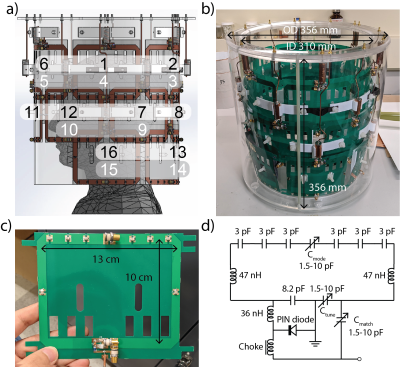 |
4 | A detunable multi-row self-decoupled Transmit Array for 7 T ASL and brain spinal cord Imaging
Xinqiang Yan1,2, Yue Zhu1,2, and Ming Lu1,2
1Vanderbilt University Institute of Imaging Science, Nashville, TN, United States, 2Department of Radiology and Radiological Sciences, Vanderbilt University Medical Center, Nashville, TN, United States
Transmit arrays improves the transmit field homogeneity while reducing the local hot spot. Current array designs for the head are not optimized for arterial spin labeling and simultaneous brain and cervical spinal cord applications caused by the short longitudinal coverage. To approach this problem, we designed and constructed a three-row Tx array covering the whole brain and cervical spinal cords (length: 28 cm). The overall performance of the coil is good with return losses < -20 dB while having adjacent coils’ coupling averaging -25.3 dB and diagonal coil’s coupling averaging -14.6 dB. The coil’s detune circuit also worked as intended.
|
||
4501 |
5 | Self-shielded and self-decoupled transmit RF array for 7T head imaging
Xinqiang Yan1,2, Yue Zhu1,2, and Ming Lu1,2
1Vanderbilt University Institute of Imaging Science, Nashville, TN, United States, 2Department of Radiology and Radiological Sciences, Vanderbilt University Medical Center, Nashville, TN, United States
Transmit (Tx) array with multiple independent coil elements is a well-recognized approach to addressing the B1 inhomogeneity and high local SAR issues at ultrahigh fields. However, Tx arrays typically have a lighter loading and more severe coil coupling. We designed a self-shielded and self-decoupled 2x8 Tx array with high inter-element isolation for 7T head imaging. Each Tx element is based on the corner-fed self-decoupled coil. Four coil elements were constructed to prove the concept is viable. The coil elements are highly decoupled (inter element response < -15 dB) while maintaining good tuning/matching characteristics (power reflection < -20 dB).
|
||
4502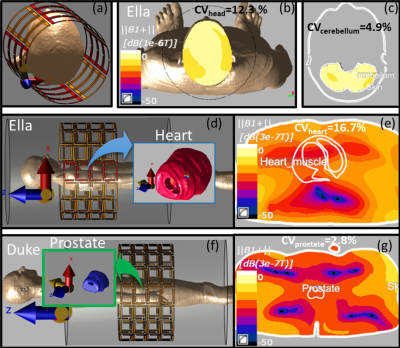 |
6 | In-silico shimming performance of a bore-sized 2-D UHF volume coil for different anatomies at 7T
Sayim Gokyar1, Henning U. Voss2, Victor Taracila3, Fraser Robb3, Douglas J. Ballon1, and Simone Winkler1
1Radiology, Weill Cornell Medicine, New York, NY, United States, 2College of Human Ecology, Cornell University, Ithaca, NY, United States, 3General Electric Healthcare, Aurora, OH, United States
We propose a two-dimensional cylindrical high-pass ladder (2D c-HPL) coil concept and investigate the contribution of the longitudinal dimension to utilize a bore-mounted general-purpose clinical volume coil for ultra-high field MRI. Theory and in-silico results show that this architecture exhibits improved B1 field uniformity for specific anatomies and regions such as brain (a coefficient of variation of 12.3%), cerebellum (4.9%), heart (16.7%), prostate (2.8%), and whole chest (36.8%). This could prove particularly useful for whole-body clinical imaging and could open new pathways for clinical diagnostics in UHF MRI.
|
||
4503 |
7 | Hairpin Radio Frequency Coil Array with High Inter-channel isolation for 7T Magnetic Resonance Imaging
Komlan Payne1 and Xiaoliang Zhang1
1Jacobs School of Medicine & Biomedical Sciences, University at Buffalo, The State University of New York, Buffalo, NY, United States
The quest for ultimate intrinsic signal-to-noise ratio (uiSNR) and higher spatial resolution at ultra-high field for parallel magnetic resonance imaging is contingent to the integrity of the magnetic flux density map from individual channel. RF coils design using hair-pin matching technique is introduced to provide intrinsic decoupling performance within array of elements. This technique does not require any additional circuit between coil elements or large value of lumped inductance to provide simultaneous decoupling between adjacent and non-adjacent coils. The simulated results including decoupling performance, field distribution, and SNR are provided to validate the feasibility of the proposed design.
|
||
4504 |
8 | Investigation of Magnetic Wall Decoupling for planar Quadrature RF Array coils using Common-Mode Differential-mode Resonators
Komlan Payne1, Salik Inayat Khan1, and Xiaoliang Zhang1
1Jacobs School of Medicine & Biomedical Sciences, University at Buffalo, The State University of New York, Buffalo, NY, United States
Parallel imaging using quadrature coil arrays can help to reach their ultimate intrinsic signal-to-noise ratio (uiSNR) and higher spatial resolution at ultra-high fields, because quadrature RF coils provide higher sensitivity and reduced excitation power over the commonly used linear polarized RF transceivers. However, due to the complicated structure and difficulties in achieving sufficient electromagnetic decoupling, it is technically challenging in designing multichannel quadrature RF coil arrays, particularly at ultrahigh fields. In this work, we design and investigate the magnetic wall decoupled common-mode differential mode quadrature RF arrays for ultrahigh field 7T MR imaging applications.
|
||
4505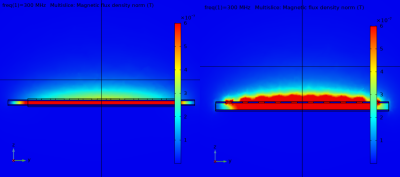 |
9 | Development of high impedance microstrip resonators for ultrahigh field MR imaging
Tianyu Gao1 and Xiaoliang Zhang2
1Biomedical engineering, University at buffalo, buffalo, NY, United States, 2Biomedical Engineering, University at buffalo, buffalo, NY, United States
Microstrip resonator has been used as the radio frequency (RF) transceiver for magnetic resonance signal excitation and reception. Its application in parallel imaging could achieve faster imaging speed and better image quality. Mutual coupling is one of the major challenges in designing a multichannel RF transceiver array required in parallel imaging technology. The mutual coupling among the array elements causes resonant frequency shift, input impedance changes, and radiation pattern change, and thus degrade the imaging quality.
|
||
4506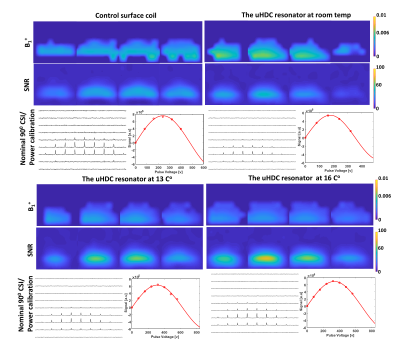 |
10 | Dielectric transreceiver resonant coil using an ultrahigh εr ceramic disk for 17O imaging at 10.5T and comparison with a single-loop surface coil
Xin Li1, Hannes M. Wiesner1, Xiao-Hong Zhu1, and Wei Chen1
1Center for Magnetic Resonance Research (UMN), Minneapolis, MN, United States
We integrated a permittivity-tunable ultrahigh dielectric constant (uHDC) disk with copper film shielding (for tuning) and a pick-up coil (for matching) for performing 17O MRS imaging (MRSI) at 10.5T. We conducted a phantom 17O imaging study to compare the coil performance and signal-to-noise ratio between the newly designed uHDC resonator with a surface loop coil of the same diameter as the disk. The results indicate a better performance of the uHDC resonator at the room temperature(21 Co), and a much better performance when the ceramic disk temperature was cooling to 16 Co, owing to a large denoising effect.
|
||
4507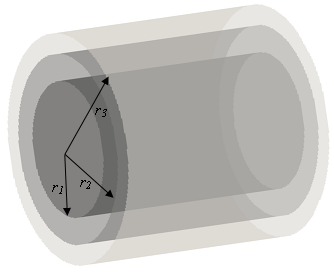 |
11 | Determination of the dielectric constant for RF passive shimming at 4T MRI
Mohan Lal Jayatilake1,2, Christopher T Sica2,3, Rommy Elyan2, Rang Pang1, Dhevin Karunanayaka2, Anupa Ekanayaka4, and Prasanna Karunanayaka2,5
1Department of Neurosurgery, Pennsylvania State University, Hershey, PA, United States, 2Center for Nuclear Magnetic Resonance Research, Pennsylvania State University, Hershey, PA, United States, 3Department of Engineering Science and Mechanics, Pennsylvania State University, University Park, State College, PA, United States, 4Grodno State Medical University, Grodno, Belarus, 5Department of Radiology, Pennsylvania State University, Hershey, PA, United States
Optimal image quality for Magnetic Resonance Imaging (MRI) at high fields requires a homogeneous RF (B1) field; however, the dielectric properties of the human brain results in B1 field inhomogeneities, and signal loss at the periphery of the head. Selecting the appropriate permittivity and quantity of material for the shim is essential. Here, we introduce a theoretical framework for determining the requisite dielectric constant of the passive shim material directly.
|
||
4508 |
12 | Large benefit of RF coil B1 efficiency for X-nuclear MRS at ultrahigh field beyond the gyromagnetic ratio advantage of proton
Xin Li1, Hannes M. Wiesner1, Xiao-Hong Zhu1, and Wei Chen1
1Center for Magnetic Resonance Research (UMN), Minneapolis, MN, United States
In this study, we conducted electromagnetic simulation of a surface loop coil to quantify the B1+ transmit efficiency of five nuclei ( 1H, 31P, 23Na, 2H and 17O) from 1.5T to 21 T field strength. The simulation is validated by FID measurements. Furthermore, we investigated the loading effect on the RF coil B1+ transmit efficiency and its dependence on B0. Our study shows the X-nuclei flip angle can be reached using the same or even less coil driving voltage as for proton, thus, significantly reducing the required RF power and SAR concern.
|
||
4509 |
13 | Improving Transmit and Receive Uniformity of 7T Brain MRI
Venkata Veerendranadh Chebrolu1, Sina Tafti2, Aaron Anderson3, and Brad Sutton3,4
1Siemens Medical Solutions USA, Inc., Rochester, MN, United States, 2Siemens Medical Solutions USA, Inc., Urbana, IL, United States, 3Beckman Institute for Advanced Science and Technology, University of Illinois at Urbana-Champaign, Urbana, IL, United States, 4Bioengineering Department, University of Illinois at Urbana-Champaign, Urbana, IL, United States
Transmit and Receive inhomogeneity accentuate with increase in MR main magnetic field strength. Recently uniform combined reconstruction (UNICORN) was proposed to improve receive uniformity and applied for improving intensity uniformity of two-, three-, and N-dimensional 7T MRI data. In this work, we aim to improve both receive and transmit uniformity of 7T brain MRI by applying UNICORN in combination with transmit inhomogeneity correction methods. MP2RAGE images acquired with TrueForm, patient-specific and volume-selective B1 shimming methods were processed using the UNICORN algorithm. Significant improvement in uniformity was achieved using UNICORN compared to unnormalized images.
|
||
4510 |
14 | A multinuclear 4-channel 2H loop and 4-channel 1H microstrip array coil for human head MRS/MRI at 7T
Xin Li1, Matt Waks1, Hannes M. Wiesner1, Soo Han Soon1, Xiao-Hong Zhu1, and Wei Chen1
1Center for Magnetic Resonance Research (UMN), Minneapolis, MN, United States
A 4-channel 2H loop and 4-channel 1H microstrip head array coil with improved MRS/MRI sensitivity and imaging coverage for a human-head-like lightbulb phantom at 7T is reported. Each of the 4 2H coils is a 22cmx14cm loop, providing excellent penetration of 2H MRS signal. The 2H loops are decoupled by multiple techniques including inductive decoupling circuits and geometric overlapping, providing S12~-20dB between any pair of 2H loop coils. The majority of measured signal-to-noise ratio of the water signal originating from the natural abundance HDO content are above 100 for the voxel size of 1.7 cc.
|
||
4511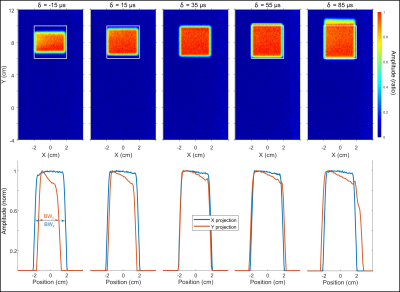 |
15 | Performance of Short, Gradient Modulated RF Pulses due to Asynchrony Between RF and Gradient Waveforms
Chathura Kumaragamage1, Peter B Brown1, Scott McIntyre1, Terence W Nixon1, Henk M De Feyter1, and Robin A de Graaf1
1Radiology and Biomedical Imaging, Yale University, New Haven, CT, United States
The effect of asynchrony between RF and gradient modulated (GM) waveforms on the performance of 3 ms gradient modulated GOIA-WURST RF pulses (BW = 15 kHz) was evaluated in simulation and experimentally. Results demonstrate that a 20+ μs asynchrony between RF and GM functions substantially degrades inversion performance when using large RF offsets to achieve translation. A projection-based method is presented that was used to calibrate RF and GM asynchrony on a 4T human MR system, where a ~40 µs asynchrony was present. The projection method allows a quick calibration of RF and GM asynchrony on pre-clinical/clinical MR systems.
|
||
The International Society for Magnetic Resonance in Medicine is accredited by the Accreditation Council for Continuing Medical Education to provide continuing medical education for physicians.